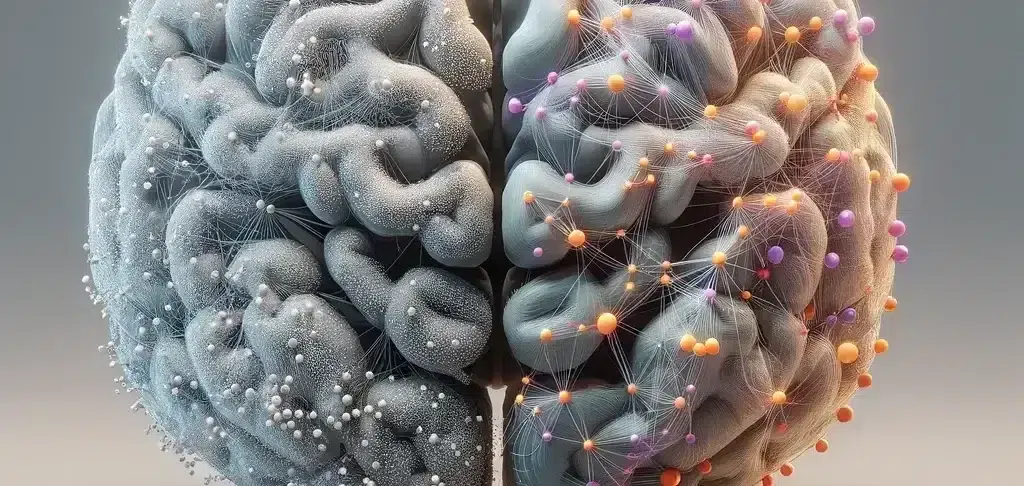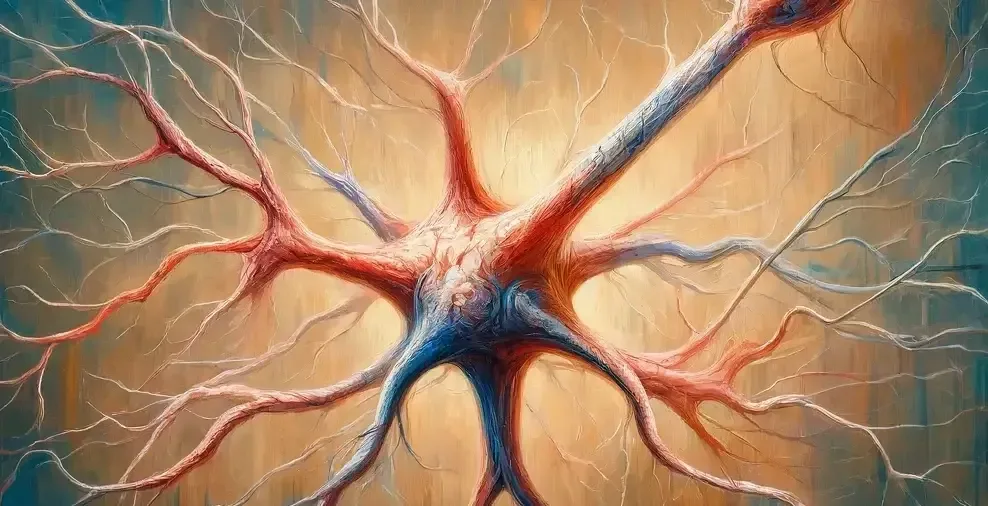Understanding the Uniqueness of Autism: Why No Two Autistic People Are the Same, Yet We Are All Equally Autistic
Autism Spectrum Disorder (ASD) is a complex neurodevelopmental condition characterized by diverse symptoms and severities, affecting communication, behavior, and social interactions. What makes autism distinctly challenging to understand and treat is its profound diversity. Each individual with autism presents a unique array of symptoms and capabilities, influenced by distinct neurological developments. This variability stems not only from genetic and environmental factors but also from the unique ways each person’s brain develops and functions.
Early Brain Development in Autism: An Overview
Accelerated Brain Growth and Its Implications
Children with ASD often experience unusually rapid brain growth in the first few years of life. This early overgrowth particularly impacts the frontal cortex, which governs communication and complex behavior, and the temporal lobes, essential for language and social awareness. Such accelerated growth tends to plateau and sometimes decrease abruptly, aligning more closely with typical development levels by late childhood or adolescence.
Imaging studies, like MRI, show that between ages 2 and 4, children with ASD might have brain volumes up to 10% larger than neurotypical peers. This increased volume affects both grey matter (neurons and their connections) and white matter (axon pathways that facilitate brain region connectivity), setting the stage for unique neural pathways that could explain the distinct ASD symptoms.
Synaptic Pruning and Neural Efficiency
During early development, an excessive production of synapses occurs, a phenomenon not exclusive to ASD but exaggerated within it. Synaptic pruning, a process where redundant neural connections are eliminated, is crucial for creating an efficient neurological network. In ASD, this pruning may be atypical, either overly aggressive or insufficient, leading to unusual neural connectivity that can profoundly affect sensory processing and social interaction capabilities. These discrepancies in synaptic pruning highlight why sensory sensitivities and social communication challenges are prevalent among those with autism.
Connectivity and Communication within the Brain
Long-Range and Short-Range Connectivity
The brain’s connectivity patterns play a pivotal role in how autism manifests. Typically, neurotypical individuals have balanced long-range and short-range connections. In contrast, studies suggest that individuals with ASD might have disruptions in this balance, with either enhanced or reduced connectivity. Enhanced short-range connections could lead to exceptional abilities or intense focus on specific interests, commonly observed in ASD. Conversely, disrupted long-range connectivity might impair the integration of information across different brain regions, complicating tasks that require holistic processing, such as social interactions and communication.
Hemispheric Integration: The Dialogue Between Left and Right Brain
The integration between the left and right hemispheres of the brain is critical for various functions, from motor coordination to complex reasoning. In ASD, the communication between these hemispheres can be atypical, possibly contributing to the challenges in social behavior and communication seen in the disorder. This aspect of neural communication underlines the importance of tailored therapeutic and educational approaches that address these specific neural communication challenges.
Embracing Neurodiversity in Autism
Autism, with its broad spectrum, reflects the incredible diversity of the human brain. Understanding the nuanced differences in brain development, synaptic pruning, and neural connectivity in individuals with ASD not only helps demystify the reasons behind the varied spectrum but also emphasizes the need for personalized approaches in treatment and education. By appreciating and embracing these differences, we can move towards more effective support that respects and enhances the lives of those with autism, acknowledging their unique perspectives and abilities in a neurodiverse world.
Building a Foundation for Happiness and Confidence
For children with Autism Spectrum Disorder (ASD), managing cognitive stimulation effectively is not just about addressing behavioral challenges—it’s about nurturing a foundation for lifelong happiness and confidence. These children often face difficulties with working memory, which can lead to repetitive behaviors and anxiety from making mistakes. By adopting a patient, step-by-step approach to learning and everyday activities, we can significantly reduce anxiety and help these children recognize and communicate their basic needs, such as when they are tired or hungry.
Tailoring Interventions to Reduce Overstimulation and Anxiety
Children with ASD can become easily overwhelmed by too much sensory input and complex instructions, leading to heightened anxiety and, sometimes, behavioral issues. It’s crucial to recognize the source of this anxiety and address it through carefully structured steps:
- Simplifying Tasks: Breaking down daily tasks and learning activities into simple, manageable steps is essential. This approach helps to prevent cognitive overload and reduces anxiety by making each task more approachable and less intimidating.
- Consistent Routines: Establishing predictable routines can provide a sense of security and stability. Consistency helps minimize anxiety by setting clear expectations, which can make transitions and new activities less stressful.
- Recognizing Physical and Emotional Cues: Teaching children to identify and communicate their physical needs (like hunger or tiredness) and emotional states is vital for their self-awareness and self-regulation. This education needs to be gradual, using tools and methods that align with the child’s learning pace, such as visual aids or simple, direct language.
The Importance of Patience in Learning and Development
Understanding that learning and development can be a slow process for children with ASD is crucial. Patience and persistence are key in guiding them through their unique challenges:
- Step-by-Step Learning: Emphasize learning one concept or task at a time to avoid overwhelming the child. Celebrate small victories to build confidence and reinforce positive learning experiences.
- Managing Expectations: It’s important for parents, educators, and caregivers to manage their expectations and remain flexible. Some skills may take longer to develop, and progress might not be linear.
- Creating a Supportive Environment: Ensure that the child’s learning environment is supportive and non-judgmental. A nurturing setting can make a significant difference in how they respond to challenges and mistakes.
Mitigating Anxiety Through Careful Planning
Excessive anxiety can often lead to behavioral issues, particularly if the child struggles to articulate their feelings. Proactive strategies to mitigate anxiety include:
- Clear Communication: Use clear and concise communication to explain tasks and expectations, reducing the chance for misunderstandings that might cause stress.
- Empowerment Through Choice: Whenever possible, allow the child to make choices about their activities or routines. This empowerment can help reduce anxiety by giving them a sense of control.
- Reinforcing Safety and Security: Regularly reinforce that it’s okay to make mistakes and that they are a natural part of learning. Creating a safe space for making errors can significantly reduce anxiety related to perfectionism and fear of failure.
Fostering Resilience and Independence in Individuals with Autism
Understanding and embracing the diversity of Autism Spectrum Disorder (ASD) is essential for developing interventions that truly meet the unique needs of these individuals. By prioritizing a foundation that emphasizes managing cognitive stimulation, simplifying tasks, and building consistent routines, we pave the way for children with ASD to grow into their best selves. This approach not only alleviates immediate challenges such as anxiety and sensory overload but also sets the stage for long-term successes in learning, social interactions, and independent living.
As we continue to explore and appreciate the neurodiversity inherent in autism, our strategies evolve from merely managing symptoms to nurturing a supportive environment where children with ASD can thrive. This nurturance allows them to harness their unique abilities and perspectives, contributing positively to their communities. Ultimately, by providing these individuals with the tools they need to manage their environment and by understanding the steps required for their development, we ensure they lead fulfilling lives marked by resilience, self-awareness, and confidence.
This comprehensive approach not only benefits the individuals with ASD but also enriches the broader society by highlighting the value of inclusivity and personalized care in fostering a diverse community where every member has the opportunity to succeed and flourish.
How the Environment Shapes the Brain
he brain’s development and function are profoundly influenced by environmental factors, a concept central to understanding both neurotypical and atypical development. This interaction between the brain and the environment occurs across the lifespan, beginning from prenatal stages and continuing into old age. Here’s a detailed explanation of how, what, why, and when the environment shapes the brain.
Neural Plasticity: The brain’s primary mechanism for interacting with the environment is neural plasticity, which is its ability to change structurally and functionally in response to experiences. Plasticity can occur in several ways:
- Synaptogenesis: Formation of new synapses, the connections between neurons, in response to learning and exposure to new stimuli.
- Synaptic Pruning: Removal of less used or unnecessary synapses, which optimizes the brain’s networking capabilities.
- Neurogenesis: Although more limited in humans, this is the creation of new neurons in certain areas of the brain, influenced by factors like exercise and mental activity.
Hormonal Changes: Environmental stressors can affect the release of hormones like cortisol, which can influence brain function and development, particularly in stress-sensitive areas like the hippocampus, which is involved in learning and memory.
What Shapes the Brain
Physical Environment: Factors such as exposure to toxins (lead, alcohol), nutrition, and even the amount of physical space available for movement can have significant impacts on cognitive development and brain structure.
Social Environment: Interactions with parents, caregivers, peers, and teachers play a crucial role in shaping the social brain networks involved in understanding and interacting with others. Emotional support and social interaction are fundamental for emotional regulation and cognitive development.
Cultural Environment: The language(s) spoken, cultural norms, and educational systems that an individual is exposed to can shape various cognitive processes, including perception, memory, and problem-solving skills.
Why the Environment Shapes the Brain
The brain is designed to adapt to its environment, ensuring that an individual can optimize their interactions with the world around them. This adaptive capability allows for learning from experiences and adjusting to better handle similar future situations. It also means the brain is equipped to develop survival strategies, including heightened alertness in stressful environments or enhanced problem-solving abilities in intellectually stimulating settings.
When the Environment Shapes the Brain
Critical and Sensitive Periods: There are specific times in brain development when the influence of the environment is particularly potent:
- Prenatal Stage: The brain is particularly susceptible to influences from the maternal environment, including nutrition, stress levels, and exposure to toxins.
- Early Childhood: This is a critical period for language acquisition and sensory development, where the brain’s plasticity allows rapid learning and adaptation.
- Adolescence: Significant brain restructuring occurs during this period, particularly in the prefrontal cortex, which governs decision-making and impulse control. Social interactions become especially influential during adolescence.
- Adulthood: While the brain is less plastic in adulthood, it continues to be shaped by experiences such as learning new skills, cognitive training, and lifestyle.
Understanding the dynamic interplay between the brain and its environment helps elucidate not only how developmental trajectories can vary significantly from one individual to another but also underscores the potential for interventions at various life stages. These interventions can aim to optimize developmental outcomes and mitigate negative influences, highlighting the importance of nurturing and supportive environments throughout life.
Environment and The Autistic Brain
How the autistic brain processes sensory information and social cues can significantly enhance parental strategies for supporting their child’s development. Here’s a revised and expanded look at how parents can facilitate positive neurological changes in their autistic child:
1. Reducing Sensory Load
- Mechanism: Enables more cognitive resources to be allocated to learning rather than compensating for sensory discomfort.
- System: Sensory processing areas in the brain.
- Application: Minimizing sensory overload—such as reducing background noise, using soft lighting, and avoiding crowded places—allows the brain to focus better on learning and interacting, as it doesn’t have to filter out excessive sensory data.
2. Routine and Structure
- Mechanism: Minimizes cognitive load by making the environment predictable.
- System: Prefrontal cortex.
- Application: A predictable routine reduces the mental effort needed to adapt to the environment, allowing the child to be more confident and focused. This predictability frees up cognitive resources for learning and social interactions.
3. Modeling Desired Behavior
- Mechanism: Facilitates learning through observation, enhancing neural mirroring.
- System: Mirror neuron system.
- Application: Parents can model social interactions, emotional expressions, and daily tasks, helping the child learn appropriate responses through imitation, which aids in integrating these behaviors more seamlessly.
4. Repetitive and Detailed Steps
- Mechanism: Strengthens neural connections through repetition, enhancing learning retention.
- System: Hippocampus and basal ganglia.
- Application: Breaking tasks into detailed, repeatable steps and consistently practicing them can solidify learning. This approach builds long-term memory and skill proficiency by reinforcing neural pathways.
5. Leveraging Special Interests for Social Learning
- Mechanism: Uses high engagement activities to teach complex social skills.
- System: Mesolimbic pathway (reward system), prefrontal cortex.
- Application: Integrating special interests into social learning can make interactions engaging and relatable, akin to non-autistic individuals who join special interest groups (like cosplay conventions or RC car clubs) to share and enjoy common interests. This similarity can facilitate natural conversation flow and help the child learn the dynamics of back-and-forth communication in a less pressured environment.
6. Gaming for Social Skills
- Mechanism: Motivates gameplay, encouraging social interaction.
- System: Reward circuits and social processing areas.
- Application: Video games that require teamwork or competitive play are excellent for practicing social skills. The motivation to advance in the game encourages interaction, communication, and cooperation, all within a structured and enjoyable framework.
7. Engaging in Special Interest Groups
- Mechanism: Enhances social motivation through shared interests.
- System: Social processing areas of the brain.
- Application: Encouraging participation in groups or events centered around the child’s special interests (like joining a robotics club or attending a science fair) can provide a natural setting for social interaction. This shared interest base creates a more comfortable and stimulating environment for social exchanges.
These strategies create a supportive environment tailored to the child’s needs and maximise opportunities for learning and social development. By understanding and leveraging these mechanisms, parents can help their autistic child develop crucial skills and manage challenges more effectively.
Respecting Autistic Needs: The Importance of Understanding and Supporting Autistic Preferences to Prevent Behavioral Challenges
Forcing an autistic individual to engage in activities against their will or restricting their engagement in preferred interests can have significant negative consequences. Understanding the unique needs and perspectives of autistic individuals is crucial for avoiding behaviors that may inadvertently lead to distress, anxiety, and behavioral problems.
The Impact of Imposed Activities
- Increased Stress and Anxiety: Autistic individuals often experience heightened anxiety, particularly when faced with unpredictable situations or demands that conflict with their intrinsic needs and preferences. Forcing an autistic person to abandon their routines or special interests can heighten their anxiety, as these activities often serve as a refuge where they feel in control and relaxed.
- Behavioral Challenges: When forced into uncomfortable situations, autistic individuals might exhibit increased behavioral challenges. This can manifest as verbal outbursts, physical aggression, or self-injurious behaviors. Such reactions are often not acts of defiance but rather symptoms of overwhelming distress.
- Meltdowns and Shutdowns: Autistic individuals may experience meltdowns or shutdowns when overwhelmed by environmental demands or sensory overload. Restrictive or forceful practices can precipitate these intense responses by creating unbearable stress levels. Meltdowns are often misunderstood as tantrums but are actually distinct and involuntary responses to feeling overwhelmed.
The Importance of Respecting Special Interests
- Social Connectivity Through Special Interests: For many autistic individuals, special interests are not merely hobbies but crucial aspects of their social engagement. These interests provide a pathway to connect with others on a meaningful level. Dismissing or restricting these activities because they don’t conform to typical social norms (e.g., preferring online gaming to face-to-face interactions) can isolate the autistic individual from potential social circles where they feel accepted and understood.
- Mental Health Implications: Regular engagement in special interests has been shown to improve mood, reduce anxiety, and increase overall mental well-being in autistic individuals. Denying them the time and space to pursue these interests can lead to depression, increased anxiety, and a sense of loss or frustration.
Long-Term Consequences
- Development of Unhealthy Coping Mechanisms: In the absence of their preferred coping strategies (like engaging in special interests), autistic individuals might turn to less adaptive behaviors to manage stress and anxiety, which can exacerbate mental health issues.
- Impact on Self-Esteem and Identity: Being repeatedly told that their natural inclinations and interests are “wrong” or “inappropriate” can lead to diminished self-esteem and a sense of alienation. This can affect the autistic individual’s self-identity and exacerbate feelings of isolation.
- Physical Health Risks: Chronic stress and anxiety, particularly if they persist over long periods due to ongoing conflicts over activities and interests, can have serious physical health implications, including cardiovascular issues and weakened immune response.
Understanding and respecting the unique ways in which autistic brains process information and regulate emotions is essential. It’s important for caregivers, educators, and partners to collaborate with autistic individuals to find a balance that respects their needs and promotes their well-being. This approach not only supports the individual’s mental health but also enriches their quality of life.









